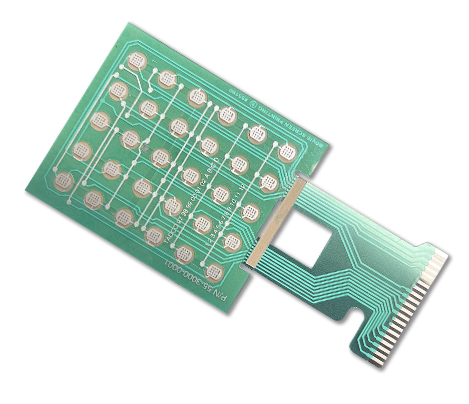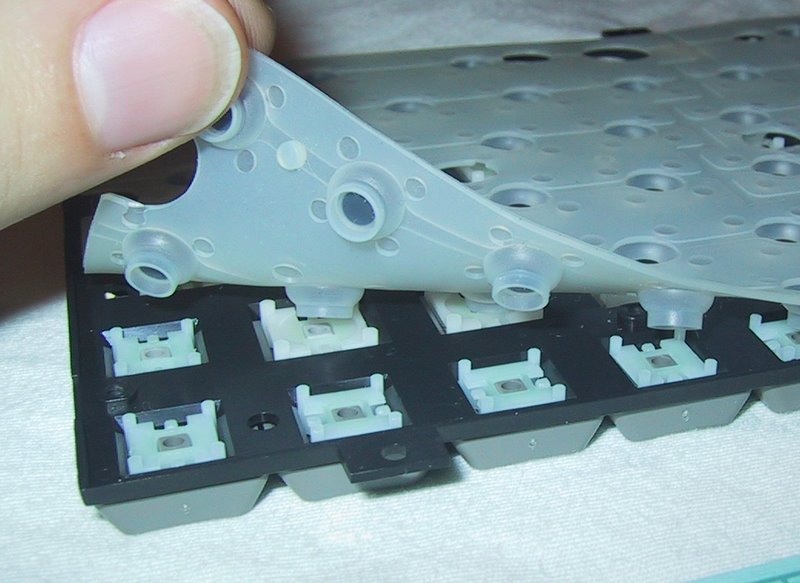Membrane Layer Changes Explained: A Comprehensive Guide to Their Advantages
Membrane switches over represent a versatile and sophisticated remedy for producing individual interfaces throughout a selection of fields. Their multilayered style not only makes certain capability with easy pressure but also supplies significant advantages, such as resilience and personalization. As industries progressively look for trusted and reliable control user interfaces, understanding the particular benefits and applications of membrane layer switches over ends up being vital. The complexities of their style and execution present special obstacles that merit closer evaluation. What factors should be taken into consideration to fully utilize their potential in modern applications?
What Are Membrane Buttons?

When stress is used to the membrane layer button, the layers make get in touch with, completing an electric circuit. This simple mechanism enables a wide variety of applications, from customer electronics to commercial equipment. Membrane switches are usually created to be resistant and waterproof to dirt and contaminants, making them ideal for atmospheres where toughness is vital.
In addition, the flexibility of the materials made use of in membrane layer changes promotes ingenious designs that can adhere to different shapes and measurements. This versatility adds to their popularity in varied fields, consisting of medical gadgets, vehicle controls, and home devices. In general, membrane layer switches stand for a vital aspect in modern interface modern technology, connecting the void between users and electronic systems.
Secret Advantages of Membrane Buttons
Among the myriad of interface choices available, membrane switches stand apart for their distinct combination of advantages. Among the key benefits is their small and lightweight layout, which enables assimilation right into a variety of devices without adding significant bulk. This is particularly useful in applications where area is restricted.
Additionally, membrane layer switches over offer durability and resistance to environmental factors. They are normally built with products that can hold up against dampness, dust, and different chemicals, making them ideal for harsh conditions. This sturdiness contributes to a longer lifespan contrasted to traditional mechanical buttons.
An additional considerable advantage is the adaptability in modification. Membrane layer buttons can be printed with various graphics, colors, and appearances, enabling customized designs that fulfill details branding or practical requirements. This adaptability includes the variety of layers and circuit alternatives, providing designers with several setups.
In addition, the responsive feedback supplied by some membrane switches boosts individual experience, making them extra user-friendly to run. The simplicity of cleaning and maintenance additionally strengthens membrane buttons as a functional option in both consumer and commercial applications. Generally, these vital advantages make them a favored option for many designers and suppliers
Applications in Different Industries
How do membrane switches locate their place throughout varied sectors? Their versatility and functionality make them indispensable elements in markets ranging from health care to consumer electronic devices. In medical devices, membrane layer switches are utilized for their simplicity of cleansing and resistance to contamination, ensuring hygiene in settings where sterility is essential.
In the customer electronics market, these switches give sleek, easy to use user interfaces that boost product appearances while keeping resilience against wear and tear. Automotive applications gain from membrane switches over too, where they are utilized in dashboards and control board, using trustworthy performance in tough problems.
In addition, commercial machinery utilizes membrane switches for control board because of their effectiveness, capacity to withstand rough environments, and customizable designs that provide to certain functional needs. The food market leverages membrane layer buttons for their convenience of visit our website usage and resistance to spills, ensuring functional performance in fast-paced setups.
Inevitably, the adaptability of membrane switches across these diverse applications underscores their important role in modern-day innovation, boosting user communication while satisfying industry-specific demands. Their continued advancement guarantees additional assimilation right into emerging fields and cutting-edge products.
Style and Modification Alternatives
The design and customization options readily available for membrane buttons are crucial for customizing interfaces to meet certain individual demands and visual preferences. These switches can be developed in different shapes, sizes, and formats, enabling smooth explanation combination right into varied applications. The versatility in layout suggests that makers can develop one-of-a-kind interfaces that improve usability and keep brand identity.
Customized graphics, appearances, and shades can be applied to the surface area of the membrane button, providing a possibility for branding and individual engagement. In addition, backlighting alternatives, such as LED illumination, can be integrated to boost presence in low-light problems, hence enhancing performance.
Useful components can also be personalized, consisting of responsive comments and actuation force, which can be changed to fit various user communications. The choice of products, such as polyester or polycarbonate, permits variants in resilience and environmental resistance, satisfying the particular needs of various industries.
Inevitably, the comprehensive layout and modification capabilities of membrane switches allow companies to develop visually attractive and easy to use interfaces, making sure that their products satisfy both useful and visual needs successfully. Membrane Switches.
Factors To Consider for Application
Executing membrane changes needs cautious factor to consider of numerous aspects to ensure optimum capability and individual experience. Factors such as direct exposure to wetness, extreme temperature levels, and chemical substances can substantially influence the switch's efficiency and long life.

An additional important facet is the button's style and design. Ensuring that the responsive responses and actuation pressure line up with user assumptions boosts use. Carrying out individual screening can provide valuable understandings into the optimum style.
Additionally, compatibility with digital parts must be analyzed. The switch's wiring ought to straighten with the total system architecture, ensuring dependable signal transmission and reducing interference.
Furthermore, manufacturing approaches and expenses need to be assessed. The option between custom-made styles and conventional models can lead and affect both here are the findings budget time.
Finally, take into consideration maintenance and repair. Membrane buttons may call for certain cleaning and treatment procedures to keep their look and performance in time. By addressing these considerations, companies can implement membrane layer buttons that fulfill their functional needs while supplying a favorable individual experience.

Conclusion
Finally, membrane switches represent a flexible and sturdy control user interface suitable for a variety of applications throughout multiple sectors. Their small layout, resistance to environmental factors, and adjustable attributes enhance user experience while meeting particular branding requirements. As innovation proceeds to evolve, the significance of membrane buttons in modern-day devices stays significant, providing both performance and visual allure. Future innovations will likely additionally broaden their applications and effectiveness in various settings.
Membrane layer changes stand for a sophisticated and functional option for developing individual interfaces throughout a range of fields.Comprehending the fundamental parts of modern-day digital user interfaces, membrane switches are a kind of user interface device that consist of flexible, thin layers of product. On the whole, membrane layer switches over stand for a vital component in modern user interface modern technology, linking the void in between customers and digital systems.
Amongst the myriad of individual interface choices offered, membrane switches stand out for their one-of-a-kind mix of benefits.The layout and personalization alternatives offered for membrane buttons are vital for customizing user interfaces to satisfy certain individual demands and visual preferences.